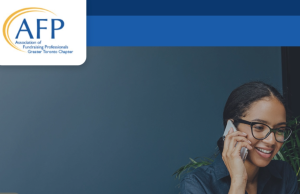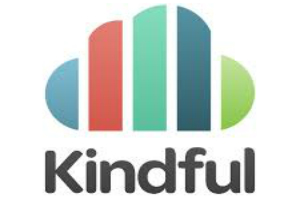
After raising about $11.5 million during the past seven years with online appeals, the Washington D.C.-based World Wildlife Fund (WWF), is no stranger to the efficiency and customization of online premiums.
Online premiums are still a rare find among nonprofits. But, according to a recent survey by marketing-services company, Paradysz, in New York City, a majority of nonprofit promotions during 2010 featured some type of direct mail incentive. Of those incentives, 42 percent included front-end gifts, while 28 percent offered back-end premiums, the other 20 percent accounting for some combination of the two.
Member magazines remained the most popular back-end premium, whereas address labels was the most used front-end premium, accounting for 28 percent. New donor direct mail campaigns did see a 10 percent decrease during 2010, as compared to the 20 percent decrease seen in 2009.
WWF puts donors on a specific donor track after their first donation, with 75 percent of donors who make an initial gift receiving a premium. Following their first donation, donors are asked to make a significant gift upgrade, putting them on a track to earn an additional premiums. Only 40 percent of renewal donors opt into receiving this level of premium, due to an unwillingness to upgrade their donation.
With an initial member donation (any donation makes you a member) of $25, donors can receive two panda tote bags. When increasing a donation to $50, supporters can choose between a panda t-shirt, two water bottles or two panda tote bags. After crossing the $100 threshold, donors can choose any item from before, with the addition of a sweatshirt with a panda on the front. And with all donations, donors are given the choice to opt out and not receive any premium.
“Online a lot of people are newly acquired donors,” said Antoinette Dack, director of membership and marketing for WWF. “That’s why we have 75 percent of newly acquired donors accepting a premium. We do offer an opt out in our direct mail, meaning ‘I don’t want to choose a premium but want to send a donation.’ Always give them the option. The premium is an incentive to give more.”
Other than many environmental groups, Dennis McCarthy, vice president of strategy and business practice of the online fundraising firm Convio in Austin, Texas, believes nonprofits have held a certain “reticence” toward embracing online premiums.
“It becomes too expensive purchasing and fulfilling the premium,” said McCarthy. “Many nonprofits have ecommerce sites, but when it comes to premiums, it’s an additional expense. They have been through the experience of direct mail and realize they have to be very careful about package costs.”
If a nonprofit does decide to encumber these new costs and have both online and offline premiums, the design of these online appeals has to greatly differ from those sent in direct mail, according to McCarthy.
Donor prospects are not as willing to read multi-page (or screen) appeals online, so copy tends to be shorter and more compelling. Devices that are successful offline, won’t necessarily be as successful online. In terms of acquisition appeals, videos and audio content are not used, specifically reserved for appeals targeted to those already supporting the organization.
“We tend to use a couple of paragraphs and shorter copy,” said David Glass, director of online marketing for WWF. “We also use more photos, more interactive elements and try to connect with people in ways they want to engage with us online.”
Glenn Lalich, vice president of research and analysis for Paradysz has found that the most successful premiums are coupled with a goal or an initiative of the organization. “Nature and wildlife (organizations) are the places where we’ve seen more online premiums,” said Lalich. “They have more room to position and expand, seeing more options tied to an initiative. Whatever incentives work, it’s best when they underscore a mission.”
The WWF’s acquisition direct mail control package is a “Say No To Plastic Bags,” with a letter focusing on using environmentally safe plastic bags. With a donation ranging from $10 to $100, donors have the opportunity to receive four WWF tote bags. According to Dack, the program’s been really successful since some supermarkets have begun to charge for use of plastic or paper bags.
“Making sure your premium connects with audience is vastly important,” said Dack. “Our bags have been a huge success in their use by our supporters and the ability to create brand awareness. Also, make sure you put your logos on your all premiums.”
Tobi DeVito, account director for PM Digital, a division of Paradysz, has seen tendencies among nonprofits using online premiums. “The front-end premium from a direct mail campaign is often used as a back-end premium for an online incentive,” she said.
The premiums presented online and offline tend to be quite similar according to McCarthy. The products are usually umbrella, tote bags or something else that is a tangible. But again, McCarthy explained that these online premiums are rare to see.
“The use of online premiums is pretty rare but some do exist,” said McCarthy. But they are not ubiquitous. People would like to have them in their own organizations, but it is practiced among larger not-for-profits that have built their lists from direct mail.”
Dack believes that the use of online premiums should be used on case-by-case basis, realizing they can make an indelible impact on any fundraising budget.
“It’s an organization’s choice. We are very careful about what we offer and have a limit on what we’ll spend on each premium,” she said. “For us, it works. For the environmental sector it works. But, the success of a program can sometimes hinge on the amount of money your willing to invest.”
DeVito offered a similar rationale for why nonprofits have hesitated using online premiums.
“Nonprofits are much more interested in the possibilities of using what they know works right now,” said DeVito. “It’s really just in the past 12 to 18 months that we have begun to see organizations having this conversation. I’ve seen more and more examples of gathering leads online, whether it be online premiums or a simple ‘sign up’ page allowing nonprofits to send information to possible supporters.” NPT












